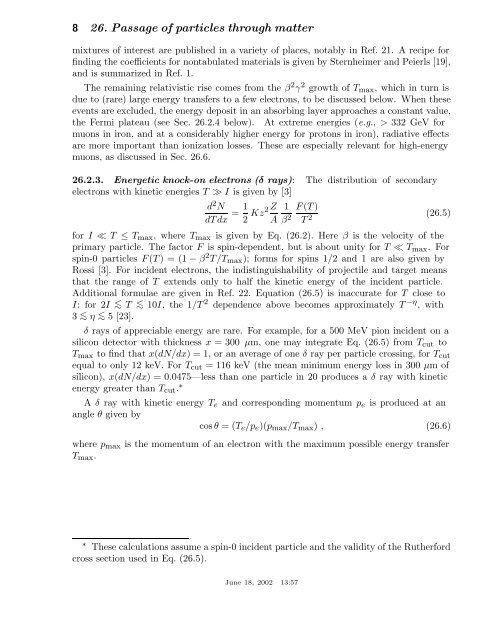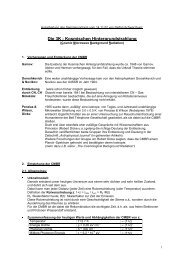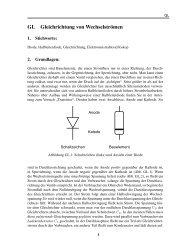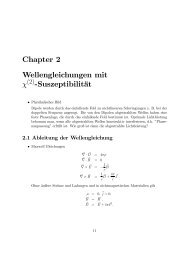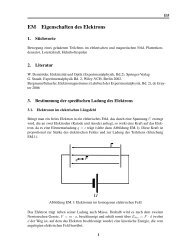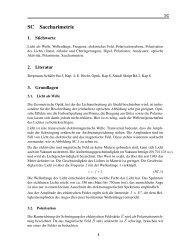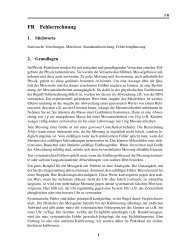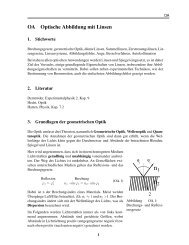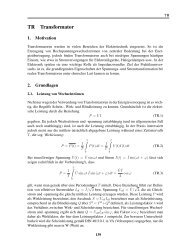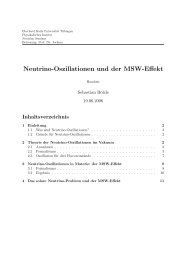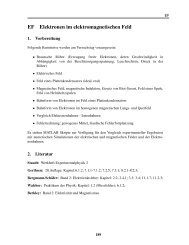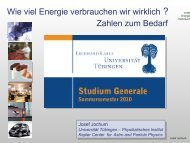26. passage of particles through matter - Particle Data Group
26. passage of particles through matter - Particle Data Group
26. passage of particles through matter - Particle Data Group
You also want an ePaper? Increase the reach of your titles
YUMPU automatically turns print PDFs into web optimized ePapers that Google loves.
8 <strong>26.</strong> Passage <strong>of</strong> <strong>particles</strong> <strong>through</strong> <strong>matter</strong><br />
mixtures <strong>of</strong> interest are published in a variety <strong>of</strong> places, notably in Ref. 21. A recipe for<br />
finding the coefficients for nontabulated materials is given by Sternheimer and Peierls [19],<br />
and is summarized in Ref. 1.<br />
The remaining relativistic rise comes from the β 2 γ 2 growth <strong>of</strong> T max , which in turn is<br />
due to (rare) large energy transfers to a few electrons, to be discussed below. When these<br />
events are excluded, the energy deposit in an absorbing layer approaches a constant value,<br />
the Fermi plateau (see Sec. <strong>26.</strong>2.4 below). At extreme energies (e.g., > 332 GeV for<br />
muons in iron, and at a considerably higher energy for protons in iron), radiative effects<br />
are more important than ionization losses. These are especially relevant for high-energy<br />
muons, as discussed in Sec. <strong>26.</strong>6.<br />
<strong>26.</strong>2.3. Energetic knock-on electrons (δ rays): The distribution <strong>of</strong> secondary<br />
electrons with kinetic energies T ≫ I is given by [3]<br />
d 2 N<br />
dT dx = 1 2 Kz2Z A<br />
1 F(T)<br />
β 2 T 2 (<strong>26.</strong>5)<br />
for I ≪ T ≤ T max ,whereT max is given by Eq. (<strong>26.</strong>2). Here β is the velocity <strong>of</strong> the<br />
primary particle. The factor F is spin-dependent, but is about unity for T ≪ T max . For<br />
spin-0 <strong>particles</strong> F (T )=(1−β 2 T/T max ); forms for spins 1/2 and 1 are also given by<br />
Rossi [3]. For incident electrons, the indistinguishability <strong>of</strong> projectile and target means<br />
that the range <strong>of</strong> T extends only to half the kinetic energy <strong>of</strong> the incident particle.<br />
Additional formulae are given in Ref. 22. Equation (<strong>26.</strong>5) is inaccurate for T close to<br />
I: for 2I < ∼ T < ∼ 10I, the1/T 2 dependence above becomes approximately T −η ,with<br />
3< ∼ η< ∼ 5 [23].<br />
δ rays <strong>of</strong> appreciable energy are rare. For example, for a 500 MeV pion incident on a<br />
silicon detector with thickness x = 300 µm, one may integrate Eq. (<strong>26.</strong>5) from T cut to<br />
T max to find that x(dN/dx) = 1, or an average <strong>of</strong> one δ ray per particle crossing, for T cut<br />
equal to only 12 keV. For T cut = 116 keV (the mean minimum energy loss in 300 µm <strong>of</strong><br />
silicon), x(dN/dx) =0.0475—less than one particle in 20 produces a δ ray with kinetic<br />
energy greater than T cut . ∗<br />
A δ ray with kinetic energy T e and corresponding momentum p e is produced at an<br />
angle θ given by<br />
cos θ =(T e /p e )(p max /T max ) , (<strong>26.</strong>6)<br />
where p max is the momentum <strong>of</strong> an electron with the maximum possible energy transfer<br />
T max .<br />
∗ These calculations assume a spin-0 incident particle and the validity <strong>of</strong> the Rutherford<br />
cross section used in Eq. (<strong>26.</strong>5).<br />
June 18, 2002 13:57


